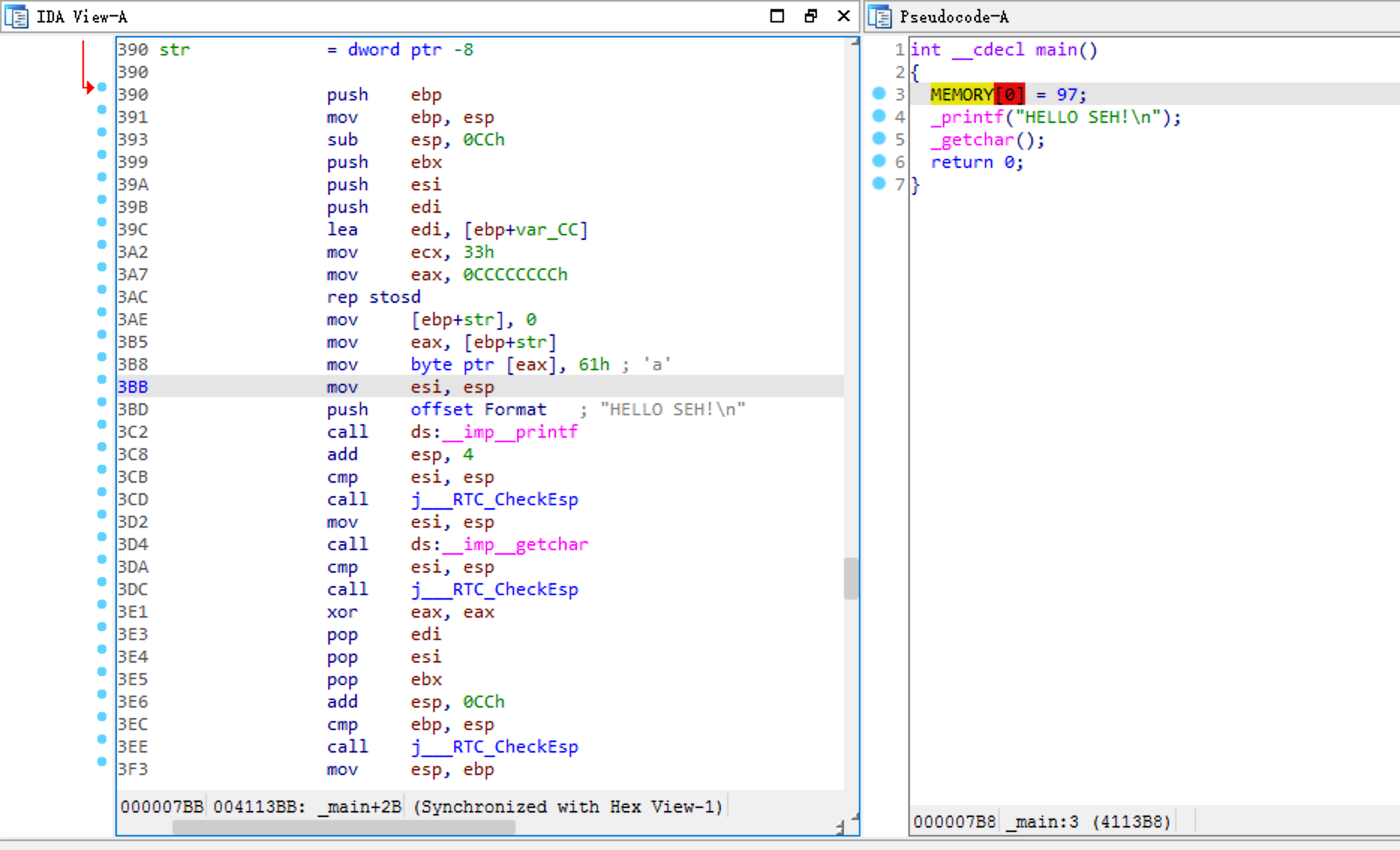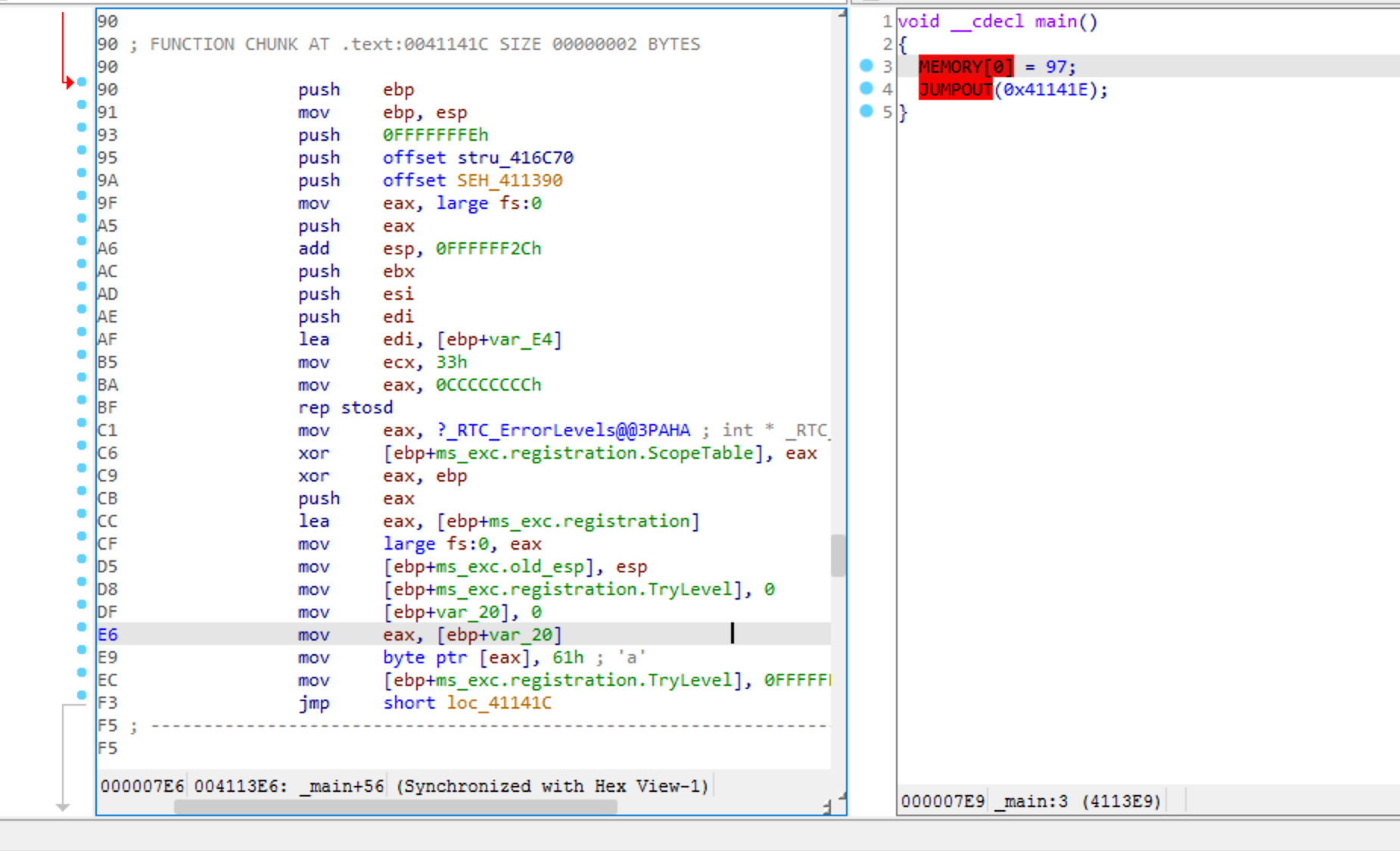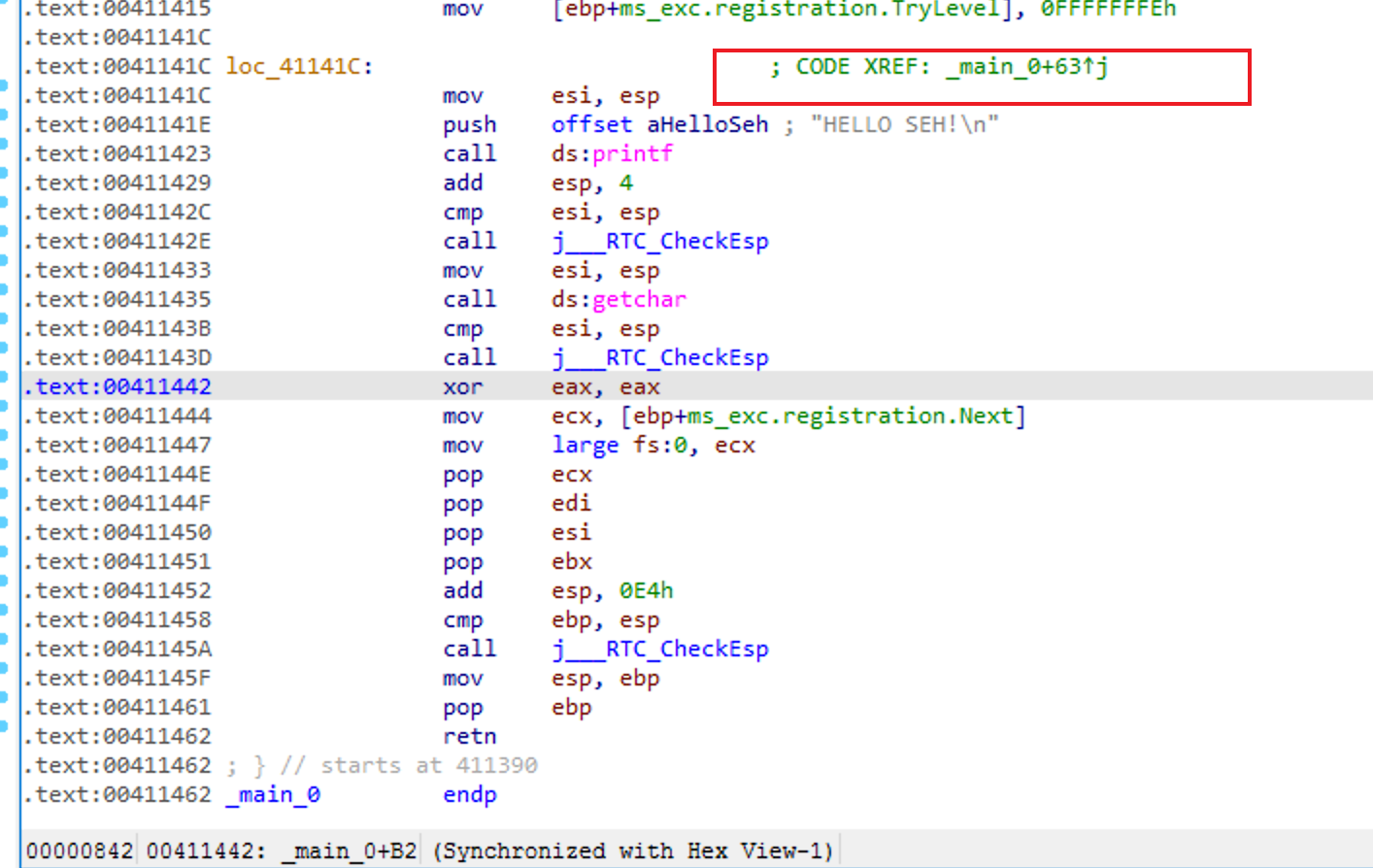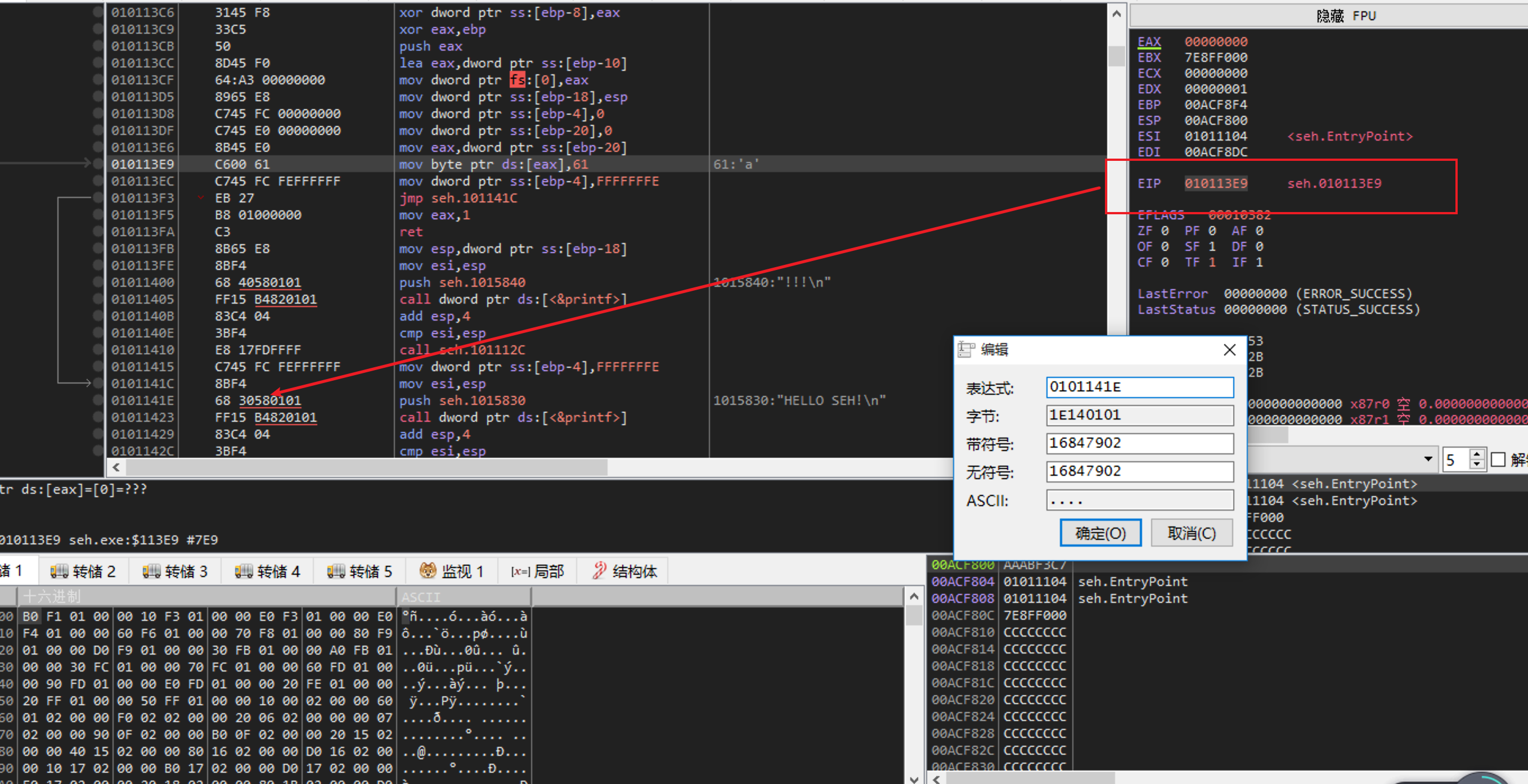说明
结构化异常处理(SEH)是Windows操作系统提供的强大异常处理功能。而Visual C++中的__try{}/\_finally{}和__try{}/__except{}结构本质上是对Windows提供的SEH的封装。
结构
线程信息块TIB
typedef struct _NT_TIB {
struct _EXCEPTION_REGISTRATION_RECORD *ExceptionList;
PVOID StackBase;
PVOID StackLimit;
PVOID SubSystemTib;
union {
PVOID FiberData;
DWORD Version;
};
PVOID ArbitraryUserPointer;
struct _NT_TIB *Self;
} NT_TIB;
|
Fs:[0]总是指向当前线程的TIB,其中0偏移的指向线程的异常链表,即ExceptionList是指向异常处理链表(EXCEPTION_REGISTRATION结构)的一个指针。
EXCEPTION_REGISTRATION结构
typedef struct _EXCEPTION_REGISTRATION_RECORD {
struct _EXCEPTION_REGISTRATION_RECORD *Prev;
PEXCEPTION_ROUTINE Handler;
} EXCEPTION_REGISTRATION_RECORD;
|
流程

代码
加入SEH的代码(没加SEH代码去掉try和except结构即可)
int main()
{
__try
{
char* str = NULL;
str[0] = 'a';
}
__except(1){
printf("!!!\n");
}
printf("HELLO SEH!\n");
getchar();
return 0;
}
|
没有SEH的反汇编

查看加入SEH代码后的反汇编

真正的代码在xref后面

可以通过od改eip的值绕过异常代码

反调试
可用于反调试,代码如下
#include <iostream>
#include <Windows.h>
EXCEPTION_DISPOSITION myExceptHandler(
struct _EXCEPTION_RECORD* ExceptionRecord,
PVOID EstablisherFrame,
PCONTEXT pcontext,
PVOID DisspatcherContext
)
{
DWORD isDebugger = 0;
_asm{
mov eax,fs:[0x18]
mov eax,[eax+0x30]
movzx eax,byte ptr[eax+2]
mov isDebugger,eax
}
if(isDebugger)
{
MessageBoxA(0,"Go out HACKERS!","WARNING",MB_OK);
exit(0);
}
MessageBoxA(0,"Exception Code Running","TIPS",MB_OK);
pcontext -> Eip += 1;
return ExceptionContinueExecution;
}
int main()
{
DWORD exceptionFunAddr = (DWORD)myExceptHandler;
_asm{
push exceptionFunAddr
mov eax,fs:[0]
push eax
mov fs:[0],esp
}
char* str = NULL;
str[0] = 'a';
printf("HELLO SEH!\n");
getchar();
return 0;
}
|
References
https://blog.csdn.net/xiaocaiju/article/details/25995495
https://www.cnblogs.com/Sna1lGo/p/14732048.html
https://www.cnblogs.com/yilang/p/11233935.html
http://www.cppblog.com/weiym/archive/2015/02/27/209884.html





